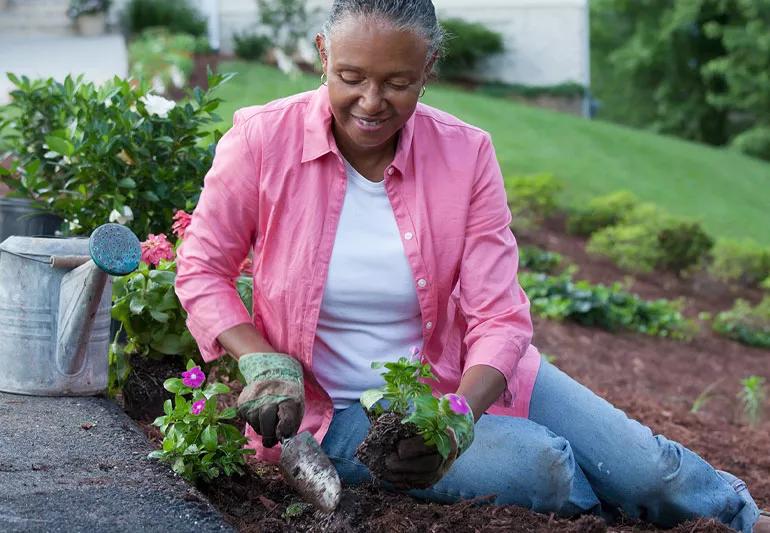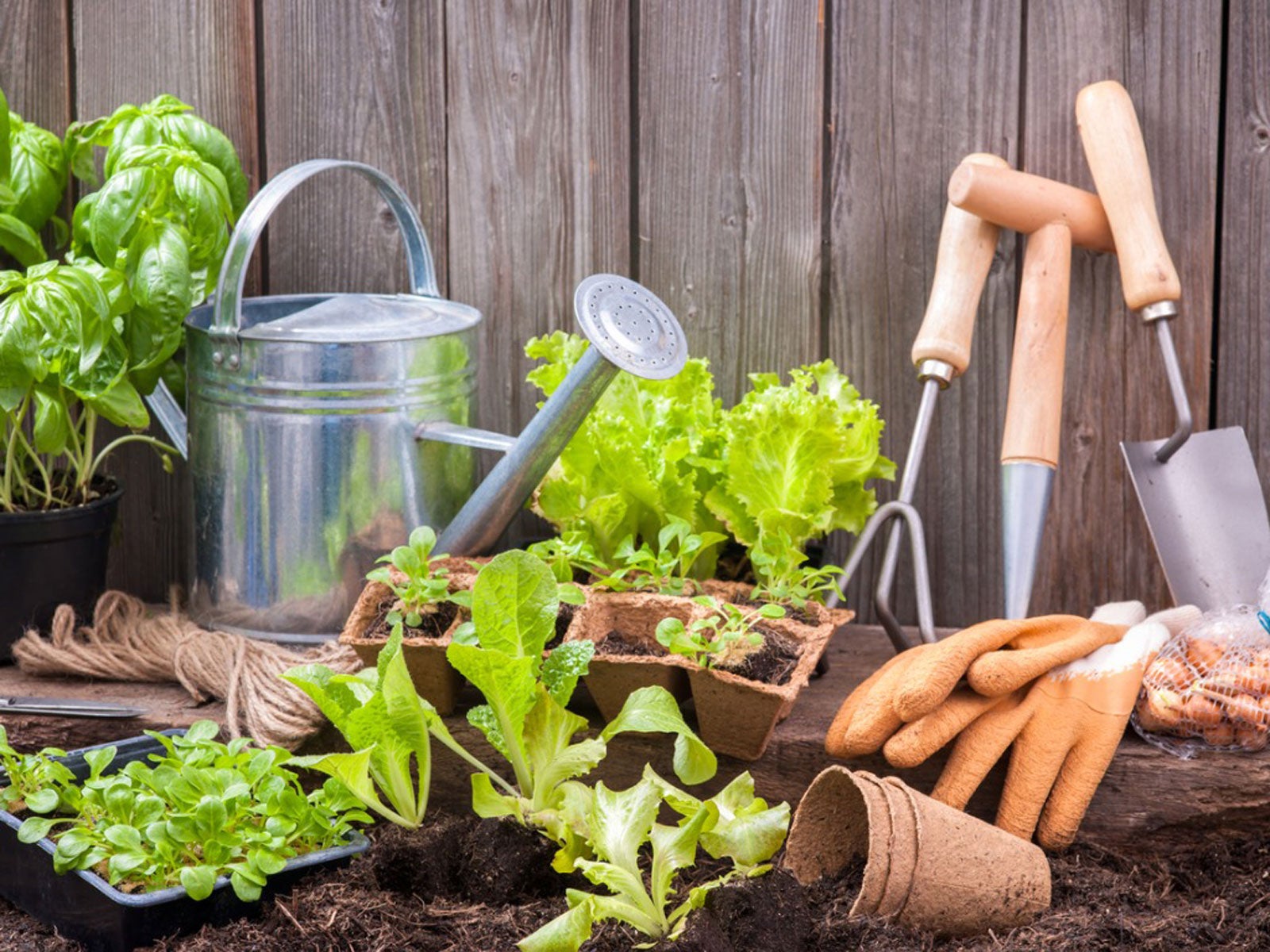Gardening Tips to Increase Your Curb Allure and Community Attraction
Gardening Tips to Increase Your Curb Allure and Community Attraction
Blog Article
Expert Gardening Tips for Developing a Sustainable and Eco-Friendly Garden
Starting the journey to develop a environment-friendly and lasting yard includes a collection of intentional choices and methods that not only improve the appeal of your space but additionally contribute favorably to the atmosphere. By choosing native plants that are fit to your area, you can decrease dependence on chemical fertilizers and chemicals while offering crucial support to local wildlife. In addition, integrating water preservation techniques and natural gardening methods plays an essential function in preserving a healthy ecological community. To uncover more sensible techniques and professional understandings, let us check out the crucial components that specify an environmentally conscious yard.
Pick Native Plants
Choosing indigenous plants for your garden is a basic action toward achieving sustainability. Native plants are inherently adapted to the local climate and soil problems, making them a lot more resistant to regional pests and diseases. This reduces the demand for chemical pesticides and plant foods, therefore decreasing ecological influence. Additionally, indigenous plants usually require less water as soon as established, adding to a lot more reliable water usage.
Beyond their useful benefits, indigenous plants play a critical function in sustaining regional biodiversity. They offer essential habitat and food sources for indigenous wildlife, consisting of pollinators such as birds, bees, and butterflies. This fosters a well balanced environment, which is essential for the health of your garden and the surrounding environment.

Implement Water Conservation
Executing water conservation methods is necessary for maintaining a sustainable yard. Efficient water usage not only lowers the ecological influence but additionally makes sure that plants get appropriate hydration without wastage. One reliable technique is to use drip irrigation systems, which provide water directly to the plant origins, decreasing dissipation and drainage. This targeted approach can considerably lower water usage compared to standard sprinklers.
In addition, mulching is a useful practice for conserving water. By applying a layer of natural mulch, such as wood chips or straw, around the base of plants, garden enthusiasts can reduce dirt dissipation and preserve regular dampness degrees. Compost likewise assists regulate soil temperature level and reduces weed growth, further adding to plant health and wellness.
Rain harvesting is an additional lasting technique. Installing rainfall barrels or other collection systems enables gardeners to capture and keep rainwater, which can later be utilized during completely dry durations. This not only conserves local water however likewise provides an all-natural, chemical-free resource for irrigation.
Lastly, selecting drought-tolerant plant types can considerably reduce water demands. These plants are adapted to thrive in low-water conditions, making them excellent for environment-friendly yards. gardening tips. Applying these water preservation approaches will promote a resistant, sustainable garden
Use Organic Horticulture Techniques

Pest administration in an organic yard counts on integrated parasite administration (IPM) approaches. These include motivating useful pests, using natural killers like lacewings and ladybugs, and carrying out crop turning to disrupt pest life cycles. Buddy planting, where particular plants are grown together to push back bugs or attract useful insects, is another efficient technique.
Weed control is managed with mulching and hand-operated removal, rather than depending on herbicides. Compost not only subdues weeds however also conserves moisture and improves dirt health as it damages see post down. Organic mulches, such as straw, timber chips, and leaves, are particularly beneficial.
Produce Wild Animals Habitats
Creating wildlife environments within your yard not only boosts biodiversity but likewise supports the environment's equilibrium. By designing spaces that attract and sustain neighborhood fauna, you can produce a successful micro-ecosystem that benefits both plants and animals. Start by including indigenous plants, as these are fit to your local environment and offer important food and shelter for wildlife. Native plants sustains a range of bugs, birds, and small animals, contributing to the environmental network.
Consider including a water attribute, such as a fish pond or birdbath, to supply a constant water source. Water aspects bring in a variety of species, from amphibians to pollinators, improving the garden's vigor. Additionally, setting up birdhouses, bat boxes, and insect resorts provides risk-free nesting websites and encourages biodiversity.
Leave some areas of your yard uninterrupted, allowing ground cover and dropped branches to accumulate. These all-natural debris stacks produce environments for insects and small creatures, promoting a balanced ecosystem. Prevent using chemical pesticides and herbicides, as they can harm helpful wildlife and disrupt food cycle. By prioritizing these sustainable practices, your yard can become a refuge for neighborhood wildlife, promoting environmental health and sustainability.
Technique Composting and Mulching
A vital facet of lasting gardening, composting and mulching, dramatically improves soil health and great post to read wellness and minimizes waste. Unlike artificial plant foods, compost enhances the soil with useful microorganisms and crucial nutrients, fostering a healthier garden ecosystem.
Mulching, on the other hand, entails covering the soil surface with natural or not natural materials, such as straw, timber chips, or shredded leaves. This technique uses several benefits: it preserves soil dampness, subdues weed growth, and moderates dirt temperature. Compost additionally slowly breaks down, including raw material to the dirt and more improving its fertility.
To practice reliable composting, ensure your garden compost stack has a balance of green materials (rich in nitrogen) and brown materials (abundant in carbon), keeping appropriate aeration and wetness. gardening tips. Consistently turning the stack accelerates decomposition. For mulching, use a 2-3 inch layer around plants, guaranteeing it does not straight speak to stems or trunks to prevent rot
Final Thought

Choosing indigenous plants for your garden is an essential step toward accomplishing sustainability.In addition, incorporating indigenous plants can boost the aesthetic appeal of your garden. my response These plants are adjusted to flourish in low-water problems, making them excellent for environment-friendly yards. Carrying out these water conservation methods will cultivate a resistant, lasting garden.
In conclusion, developing a sustainable and green garden involves the calculated option of indigenous plants, the adoption of water preservation techniques, and the implementation of natural gardening methods.
Report this page